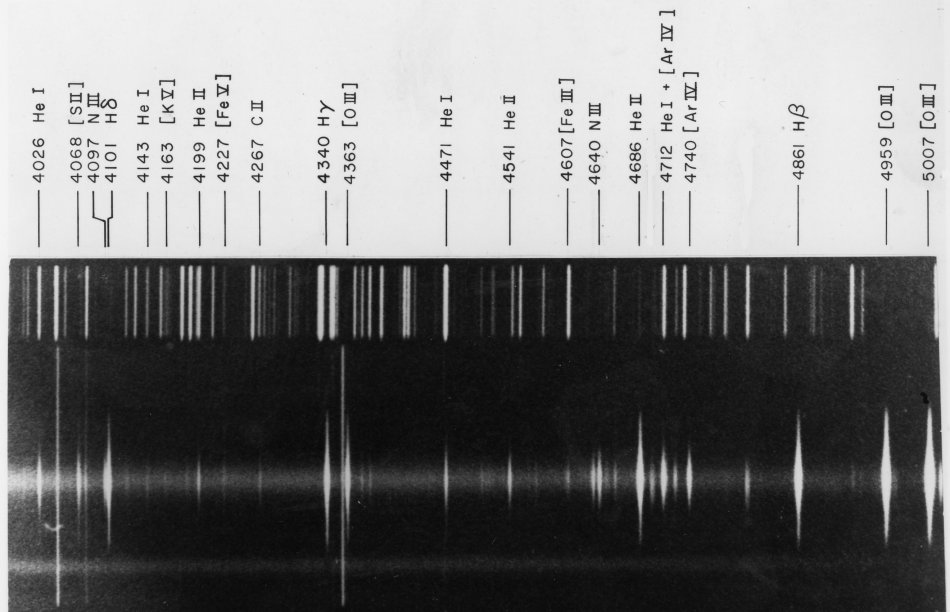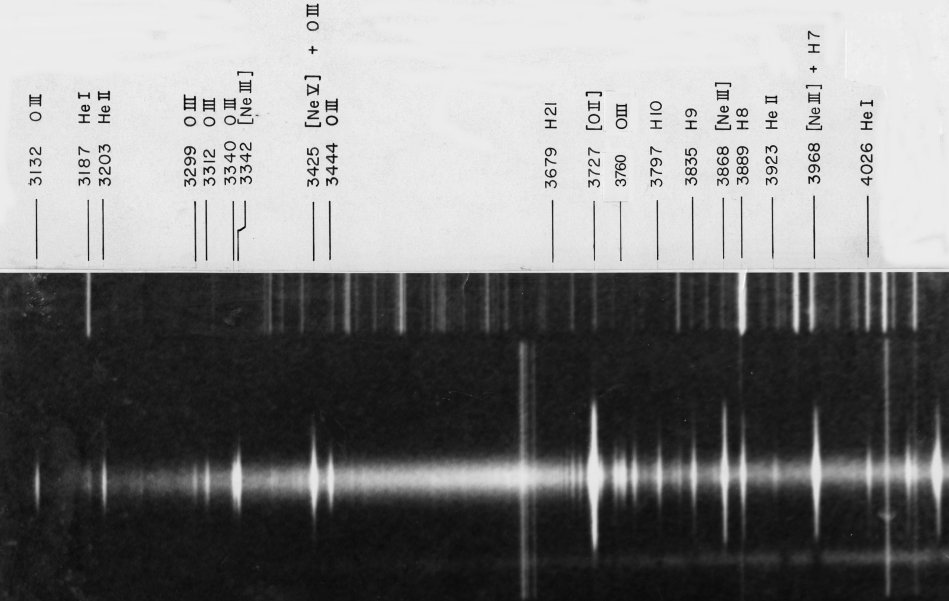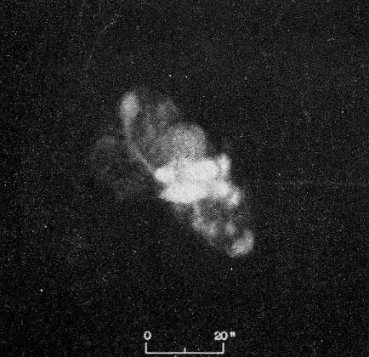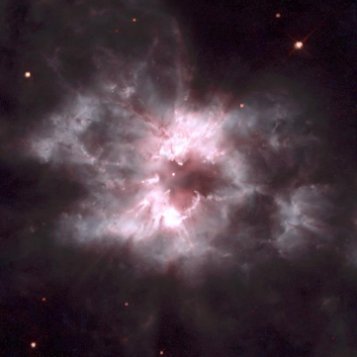 |
| Panel 1. See full resolution.
The two strong forbidden ionized lines of [N II] are almost blended with the H-
Alpha line at 6563 Angstroms at far right. The strength of the low-excitation
nitrogen lines contrast sharply with the existence of the {K V] line of four
times ionized potassium. The even-lower excitation neutral lines of [O I] are
notable as well, as is the recombination line of He I at 5876 Angstroms near
center. At far right are a pair of forbidden ionized sulfur lines at 6717 and
6731 Angstroms that are used to find the gas density, as are the forbidden
doubly ionized [O III] chlorine lines left of center at 5517 and 5537
Angstroms. The spectrogram was one of the first in which Doppler shifts within
the lines were used to establish a planetary nebula's structure. At far left
are the two [O III] "Nebulium" lines also seen, and further described, in Panel
2, with H-Beta to the left of them. The ratio of the intensity of H-Alpha to
that of H-Beta is used to derive the degree of interstellar dust absorption.
|
|
 |
| Panel 2. See full resolution .
The spectrum is dominated at far right by the forbidden [O III] "Nebulium"
lines" at 5007 and 4959 Angstroms, which in 1928 were found to be forbidden
lines of doubly ionized oxygen, [O III], first discovered in the spectrum of NGC 6543 by Sir William Huggins in 1864 with his visual
spectroscope. H-Beta, at 4861 Angstroms, again stands just to the left of
them. The 4686 Angstrom recombination line of ionized helium is almost as
strong as H-Beta. Its strength reflecting central star temperature, it's not
seen at all in the spectrum of low-excitation IC 418 and is modest in that of
NGC 7009. Another [O III] forbidden line at 4363 Angstroms just to the right
of H-Gamma at 4340 Angstroms is used with the bright [O III] lines at 4959 and
5007 Angstroms to get the gas temperature. The very long lines seen here and in
Panel 3 are from mercury vapor street lights in the valley below.
|
|
 |
| Panel 3. See full resolution.
The powerful blended low-excitation [O II] lines at 3727 Angstroms (separated
in the spectrum of NGC 7009) contrast sharply with very high excitation [K V]
and [Fe V] lines in Panel 2. The ratio of the [O II] lines is also used to
derive gas density. The confluence of the hydrogen Balmer lines culminates in
the strong Balmer continuum that begins at 3646 Angstroms and is caused by the
capture of free electrons. The O III recombination lines of doubly ionized
oxygen in the ultravioilet at far left are produced by a fluorescent mechanism,
and are also present in the spectrum of NGC 7009. |






